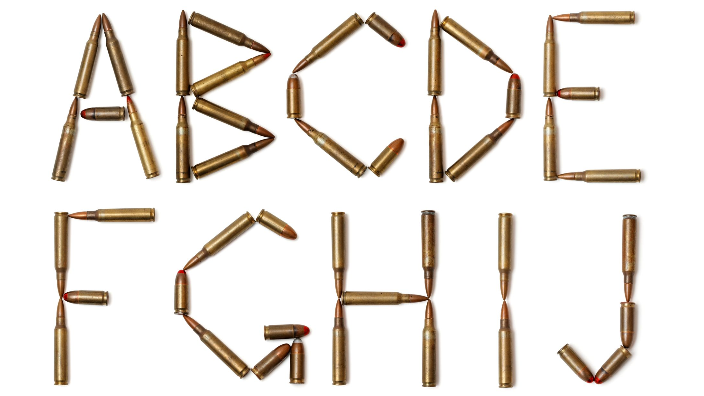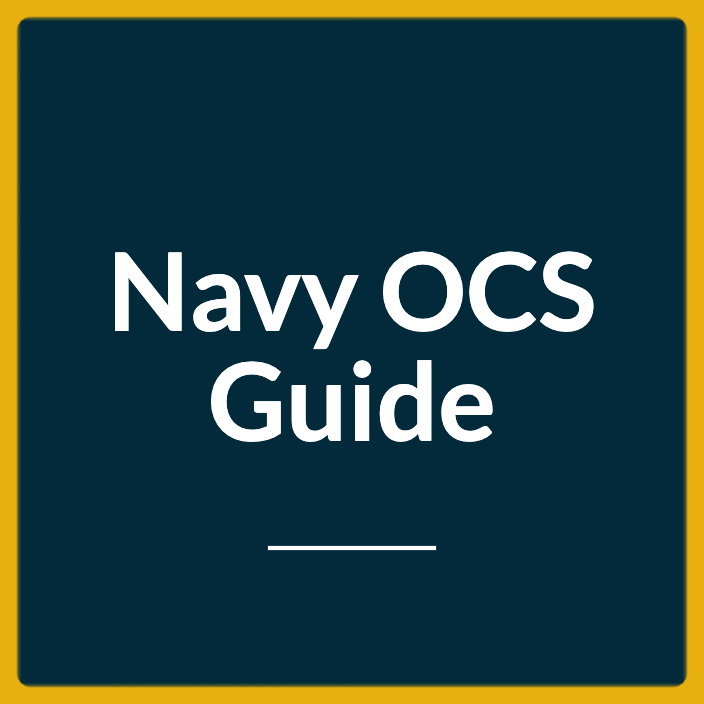Last Updated on August 30, 2023
The military alphabet is a phonetic alphabet used for clear communication.
It helps eliminate confusion caused by similar-sounding words during radio communication.
The alphabet was created by the International Civil Aviation Organization (ICAO) in the 1930s and later approved for military usage in 1957.
Modifications were made in 1956 for better communication in challenging environments.
Each letter of the English alphabet is assigned a code word, like “Alpha” for A and “Bravo” for B.
This alphabet is widely used by armed forces and international organizations for efficient communication.
It ensures accuracy and clarity in important situations.
26 Letters in the Military Alphabet

The military alphabet, also referred to as the NATO alphabet or phonetic alphabet, serves as a code word system for representing each letter of the English alphabet. This communication tool is extensively used in military, civilian, and amateur radio operations to ensure precise and unambiguous transmission of messages.
Here are the 26 letters of the English alphabet and their corresponding words in the military alphabet:
A – Alpha
B – Bravo
C – Charlie
D – Delta
E – Echo
F – Foxtrot
G – Golf
H – Hotel
I – India
J – Juliet
K – Kilo
L – Lima
M – Mike
N – November
O – Oscar
P – Papa
Q – Quebec
R – Romeo
S – Sierra
T – Tango
U – Uniform
V – Victor
W – Whiskey
X – X-ray
Y – Yankee
Z – Zulu
The current version of the military alphabet was established in 1956 by the ICAO and is required for use by all military, civilian, and amateur radio operators, according to the International Telecommunication Union (ITU).
It serves an important purpose in radio communication, promoting clear communication and preventing confusion caused by similar sounding letters.
What is the Military Phonetic Alphabet?
The military phonetic alphabet is a system used by military organizations to communicate letters clearly.
Also known as the NATO phonetic alphabet or the International Radiotelephony Spelling Alphabet, it ensures accurate and efficient communication.
This alphabet assigns specific words to each letter, eliminating confusion. Militaries around the world and international organizations like the ICAO use this alphabet.
By using it, military personnel can effectively communicate in different operational situations.
History and Development of the Military Alphabet
The military alphabet is a phonetic alphabet used for spelling words and letters through radio communication.
It was developed by the ICAO to ensure clear and accurate communication between pilots and air traffic controllers.
The first official version was approved in 1927 and primarily used in aviation and maritime industries.
It was later adopted by the armed forces. In 1957, the current version, known as the NATO alphabet, was approved, with some letter modifications to improve radio communication.
In 1956, the ICAO started changes to certain letters in the military alphabet. ‘A’, ‘N’, ‘ M’, ‘S’, and ‘T’ were changed to ‘Alpha’, ‘November’, ‘Mike’, ‘Sierra’, and ‘Tango’.
These changes were made to improve clarity and prevent confusion during oral communication.
Today, the military alphabet is widely used in various industries, including emergency services, law enforcement, and aviation.
Its standardized format is easily recognizable and plays a crucial role in error-free spelling and effective oral communication.
How is the Military Alphabet Used in Communication?
The military alphabet is used in communication, such as telephone conversations and radio transmissions. It also works with Morse Code and signaling.
The purpose is to have a standardized system for spelling and conveying information. Each letter has a codeword that represents a specific sound, like “Alpha” for A and “Bravo” for B.
The codewords are chosen carefully to prevent confusion, especially with background noise or language barriers. This allows for effective communication across languages and messages.
The military alphabet helps prevent spelling errors. Traditional letter names can be confusing, but the military alphabet is clear and easily understood.
This reduces mistakes and ensures accurate communication. It’s important to note that different organizations may have slight variations in pronunciation.
For example, NATO and the United States Armed Forces may pronounce certain codewords differently. Numeric code words are also used alongside the military alphabet for specific messages.
Overall, the military alphabet is crucial for clear communication, not just in the military but also in emergency services, law enforcement, and aviation.
Its standardized format and distinct codewords make it an essential tool for effective oral communication.
Advantages of Using the Military Alphabet
The military alphabet is also known as the phonetic alphabet or spelling alphabet. It offers advantages in communication. It solves the problem of unclear pronunciation.
Traditional letter names can be easily misunderstood or confused. This is especially true in noisy environments or with language barriers.
The military alphabet uses distinct codewords for each letter. This ensures accurate communication, regardless of pronunciation differences.
The military alphabet also overcomes the challenge of similar sounding words. Each letter has a unique codeword, making it easy for words that sound similar in spoken language.
This eliminates confusion and ensures accurate transmission of information, and it improves communication in poor radio conditions.
The codewords make communication clearer and reduce misinterpretation or errors. It also helps with error-free spelling by using specific codewords for letters.
This ensures accurate and efficient communication, especially in military or emergency situations.
The military alphabet allows effective communication across different languages by using universally recognized codewords.
The military alphabet is a useful tool for clear pronunciation, avoiding confusion, improving communication in difficult radio conditions, accurate spelling, and effective communication across different languages.
It is beneficial for oral communication in different situations.
Examples of the Military Alphabet in Action
The military alphabet, also known as the phonetic alphabet or spelling alphabet, is widely used in various communication scenarios. Here are some practical examples of how the military alphabet is put into action:
1. Spelling out names: In situations where accurate spelling is crucial, such as during phone conversations or in military operations, the military alphabet is used.
For example, the name “Smith” would be spelled as “Sierra Mike India Tango Hotel.”
2. Identifying locations: When giving or receiving coordinates or addresses, the military alphabet ensures clarity and precision.
3. Emergency situations: In emergency response situations, where quick and accurate communication is essential, the military alphabet helps avoid confusion.
First responders can use the alphabet to convey vital information, such as “Charlie Mike” for “Continue Mission” or “Oscar Mike” for “On the Move.”
4. Popular culture: The military alphabet has made its way into popular culture through movies and TV shows.
For example, in the film “Top Gun,” characters frequently use the alphabet during radio communications, such as “Lima Charlie” for “Loud and Clear.”
The military alphabet proves invaluable in practical scenarios, ensuring accurate and efficient communication across various industries and situations, from spelling out names to identify locations.
Use Outside the Military
1. Aviation Industry: The aviation industry, including pilots, air traffic controllers, and ground crew, often uses the military alphabet to communicate critical information, such as aircraft identification, weather, and navigation instructions.
Using the military alphabet ensures clear and accurate communication, reducing the risk of misinterpretation and potential accidents.
2. Shipping and Logistics: In the shipping and logistics industry, using the military alphabet helps to avoid confusion and mistakes when conveying information over the radio or telephone.
Whether it’s identifying cargo, ship names, or communicating coordinates, the military alphabet provides a standardized and universally understood method of communication, facilitating smooth operations and minimizing errors.
3. Emergency Services: Emergency services like police, fire departments, and paramedics use the military alphabet to ensure clear and efficient communication during critical situations.
When relaying important details such as addresses, vehicle descriptions, or patient information, using the military alphabet helps to avoid misunderstandings and allows for quick and accurate response times.
4. Radio Communication: Various industries that rely on radio communication, such as security personnel, event organizers, and transportation companies, find the military alphabet beneficial.
It enables concise and unambiguous communication, especially in noisy or crowded environments, where traditional spelling or verbal communication may be difficult to understand.
5. Maritime Industry: Similar to the aviation industry, the maritime industry, including sailors, coast guards, and port authorities, employs the military alphabet to ensure effective communication on the open sea.
Using the military alphabet enhances communication clarity, particularly when dealing with vessel identification, navigation instructions, and emergency situations, ultimately contributing to maritime safety.
6. Film and Television Production: In the fast-paced environment of film and television production, crew members often use the military alphabet to communicate quickly and efficiently.
Whether it’s coordinating equipment, scenes, or actor positions, using the military alphabet allows for clear communication amidst the chaos, ensuring smooth operations on set.
7. Outdoor Recreation and Adventure Activities: Outdoor enthusiasts taking part in activities like hiking, camping, and rock climbing often use the military alphabet to communicate essential information.
Sharing trail names, coordinates, or emergency situations in a standardized manner enhances safety and facilitates effective communication between individuals or groups.
8. Event Management: Event planners and organizers frequently rely on the military alphabet to convey crucial information during large-scale events.
Whether it’s coordinating logistics, managing security, or communicating with staff, using the military alphabet helps ensure accurate and efficient communication, contributing to the overall success of the event.
9. Security Industry: Security personnel, such as guards, bouncers, and surveillance teams, use the military alphabet to communicate effectively and discreetly.
Using the military alphabet allows for quick and concise communication, ensuring that critical information is relayed accurately and efficiently, especially in situations that require immediate response or when confidentiality is essential.
10. Road Construction and Maintenance: The military alphabet finds application in the road construction and maintenance industry, where workers need to communicate precise information about locations, equipment, or hazards.
By using the military alphabet, workers can convey details clearly, reducing the risk of misunderstandings and potential accidents on job sites.
Importance of Learning Military Alphabet
Learning the military alphabet, also known as the NATO phonetic alphabet, is important for several reasons, even if you are not in the military.
The military alphabet comprises a standardized set of words that represent each letter of the alphabet to ensure clear and effective communication, especially in situations where verbal communication may be challenging or critical.
Here are several key reasons it is beneficial to learn the military alphabet:
1. Clarity and Precision: The military alphabet eliminates confusion and ambiguity when communicating letters over the phone, radio, or in any situation where verbal communication is necessary.
By using distinct words for each letter, it reduces the chances of misinterpretation or misunderstanding, especially when dealing with similar sounding letters like “B” and “D” or “M” and “N.”
2. Emergency Situations: In emergency situations, such as accidents, natural disasters, or medical emergencies, clear communication is crucial.
Knowing and using the military alphabet can help you convey important information accurately and efficiently.
Emergency services, including police, fire departments, and medical personnel, often use the military alphabet to ensure accurate communication when dealing with critical situations.
3. International Communication: The military alphabet is an internationally recognized phonetic alphabet that is widely used by various organizations, including aviation, maritime, and emergency services across the globe.
If you travel internationally or work in a field that involves international communication, knowing the military alphabet can help bridge language barriers and ensure effective communication.
4. Professional Communication: Learning the military alphabet can enhance your professional communication skills, even if you are not in the military.
Many industries and professions, such as aviation, logistics, transportation, and telecommunications, use the military alphabet as a standard communication protocol.
Being familiar with the military alphabet can improve your ability to communicate clearly and efficiently in these industries.
5. Increased Efficiency: When spelling out names, addresses, or any other information over the phone or in radio communication, using the military alphabet can save time and avoid confusion.
Instead of struggling to find words that start with certain letters, the military alphabet provides a set of predetermined words that are universally understood.
This can significantly speed up communication and prevent errors or misunderstandings.
6. Personal Development: Learning the military alphabet can be a valuable skill for personal development.
It challenges your memory and cognitive abilities as you memorize and recall the words associated with each letter.
It shows your commitment to effective communication and attention to detail, which can be beneficial in both personal and professional settings.
In conclusion, learning the military alphabet has practical applications beyond the military.
It enhances clarity, precision, and efficiency in communication, particularly in emergency situations or industries that rely on clear and accurate verbal communication.
It can bridge language barriers in international communication and improve personal development by challenging memory and cognitive abilities.


